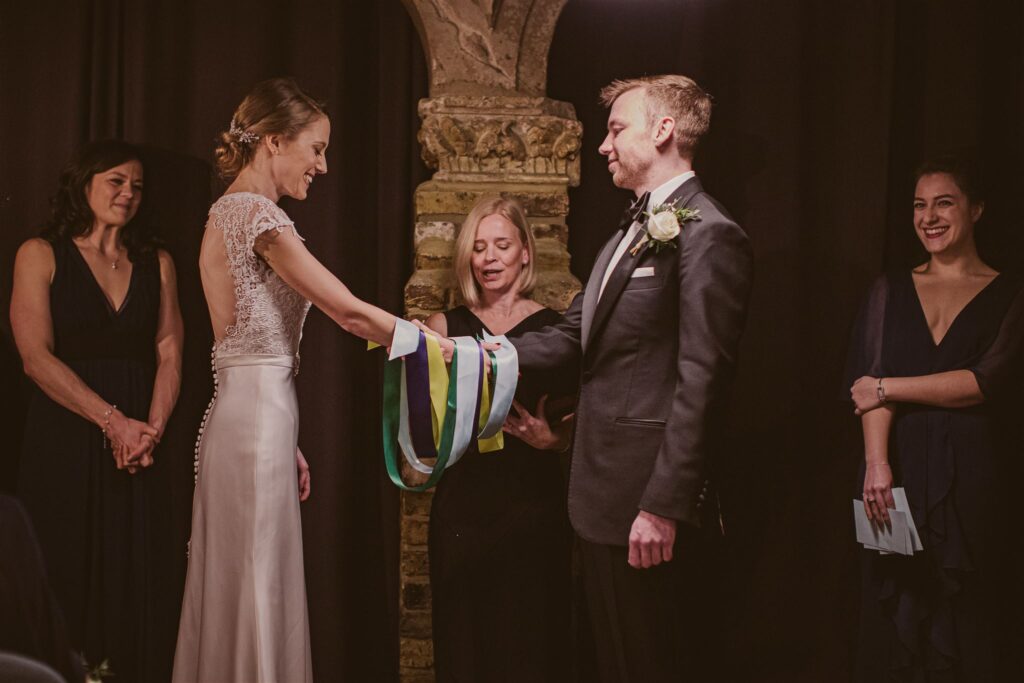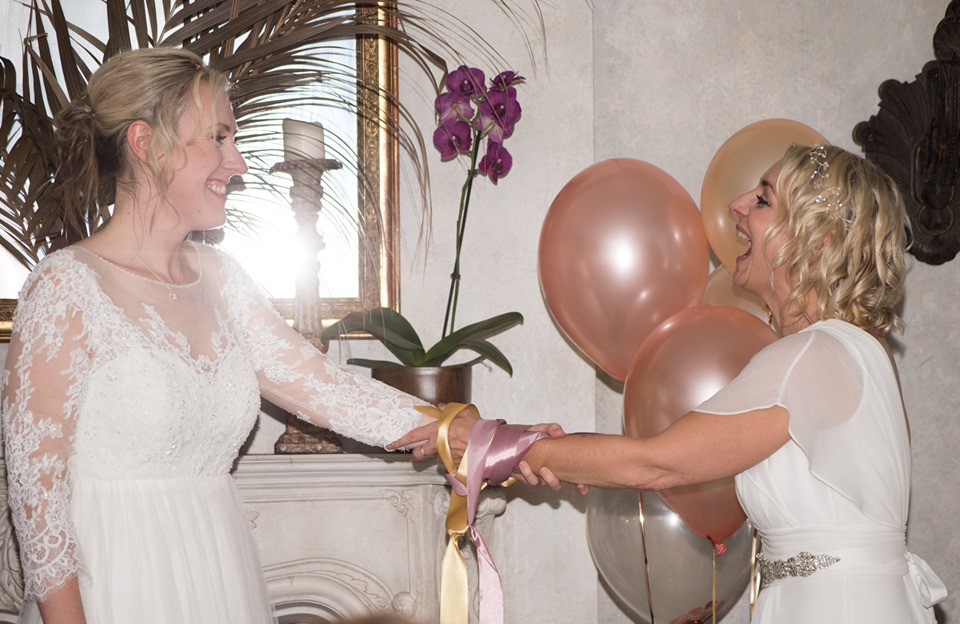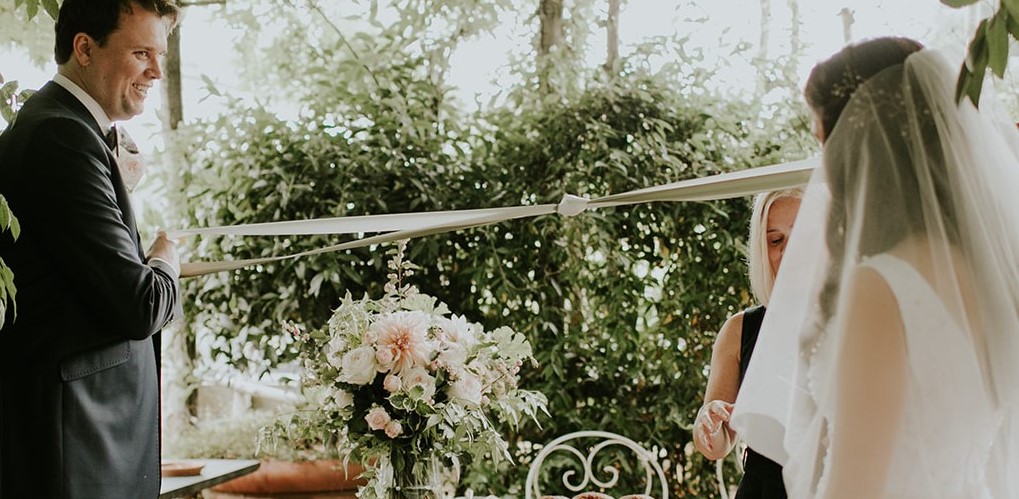A handfasting brings visual intrigue to your wedding ceremony, and for many of your guests it will be the first time they have seen this ancient tradition.
If you step way back in time to 12th Century, handfasting was part of every marriage and the couple’s hands were bound together using ribbons or cord. This is where the age old phrases of tying the knot and binding agreement originated, and today there are plenty of modern twists on this very special symbolic act. My favourite options are the Celtic Love Knot and what I like to call the Ribbon of Promises. Let’s look at each of these in a bit more detail…
Celtic Love Knot
The Celtic love knot involves the bride and groom clasping their right hands together, with pulse points touching, and two ribbons are wrapped around their hands to bind them together. I then like to say a hand blessing, describing how these are the hands of the person who will love you and hold you, and wipe away the tears of happiness as well as sadness, and still be reaching for your hand when you are old and grey. Once the blessing is complete, the couple pull their hands from the ribbons holding onto the ends and a Celtic Love Knot is created to bring the two ribbons together.
Sarah and Andy married at The Humble Grape in London where we used four different coloured ribbons for the Celtic Love Knot. The colours for each of the ribbons were chosen by school friends of the bride for their symbolism such as green for honesty and independence and indigo for trust and respect. Each of the friends bound their chosen ribbons around the couple’s hands and explained their symbolism; it was a really special and somewhat emotional part of the ceremony!

Ribbon of Promises
If you would like to involve close family or friends in your wedding ceremony then the Ribbon of Promises is a great option. I love to include it when existing families are coming together and the children of the bride and/or groom make the bindings. In this version of a handfasting ceremony the couple clasp their right hands together, once again with pulse points touching, and a ribbon is placed under the thumb of each. The ribbons are then gradually wrapped around the couple’s hands as they make promises to each other. After each promise, the ribbons are passed over their hands and a knot is tied underneath, this is repeated for each promise – four times is perfect. The groom then holds the ribbons where the final knot has been made and the couple both pull their hands away for the ribbons to create a chain where the knots have been made after each promise. As well as making those close to you a special part of the ceremony, it’s a bit of theatre for your guests too!
Shelley and Emma had a small registry office wedding in the early afternoon followed by a surprise handfasting ceremony for a much larger group of family and friends, who thought they were just attending the wedding breakfast upstairs at The Joker in Brighton. Shelley’s daughters bound their mums’ hands as they made promises to each other and to their daughters, a really lovely moment in their day.

So there you have it, my brief guide to including a handfasting as part of your wedding ceremony. You can read more about my wedding services on my wedding ceremonies page, or drop me a line at stephanie@silverbeeceremonies.co.uk if you’d like to find out more.

